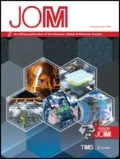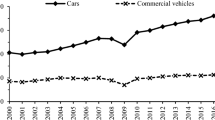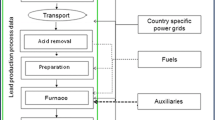Abstract
This paper discusses how design software tools and recycling models can be linked to predict the recyclability of a car during the design phase and to provide a sound technological basis when designing for recycling. Due to the car’s complex design and time-varying parameters such as lifetime, weight, and composition, recycling must be optimized on a sound technological basis in which the dynamic and statistically distributed parameters affecting the recycling rate are described and understood. This paper presents dynamic and recycling models developed to optimize the recycling of the car and to calculate recycling rates. The performance of a large-scale industrial recycling experiment based on the theory presented here is also discussed. It is indicated that without any statistics involved in the estimation of recycling-rate calculation, as well as the inclusion of the issues and theory discussed in this paper, the International Organization for Standardization norm for recycling rate calculation is really useless.
Similar content being viewed by others
References
Directive 2000/53/EC of the European Parliament and of the Council of 18 September 2000 on end-of-life vehicles, 2000. Official Journal of the European Communities L269, 21-10-2000.
COD, 2004/0053 (COD), 2004. Proposal for a Directive of the European Parliament and of the council on the type-approval of motor vehicles with regard to their reusability, recyclability, and recoverability and amending Council Directive 70/156/EEC. Commission of the European Communities, Brussels, 11-3-2004.
A. van Schaik and M.A. Reuter, “The Time-Varying Factors Influencing the Recycling Rate of Products,” Resources, Conservation and Recycling, 40 (4) (2004), pp. 301–328.
A. van Schaik, M.A. Reuter, and K. Heiskanen, “The Influence of Particle Size Reduction and Liberation on the Recycling Rate of End-of-Life Vehicles,” Minerals Engineering, 17 (2) (2004), pp. 331–347.
“Road Vehicles—Recyclability and Recoverability—Calculation Method, ISO 22628 (International Organization for Standardization) (2002).
A. van Schaik and M.A. Reuter, “The Effect of Design on Recycling Rates for Cars—Theory and Practice,” Proceedings of the International Automobile Recycling Congress (Muri, Switzerland: ICM AG, 2004).
V. Ververka and F. Madron, Material and Energy Balancing in the Process Industries (Amsterdam, The Netherlands: Elsevier, 1997).
F.F. Pitard, Pierre Gy’s Sampling Theory and Sampling Practice: Heterogeneity, Sampling Correctness, and Statistical Process Control, Sec. Ed. (Boca Raton, FL: CRC, 1993).
Author information
Authors and Affiliations
Additional information
for more information, contact M.A. Reuter, Delft University of Technology, Mijnbouwstraat 120, 2628RX Delft, The Netherlands; M.A.Reuter@citg.tudelft.nl.
Rights and permissions
About this article
Cite this article
van Schaik, A., Reuter, M.A. The optimization of end-of-life vehicle recycling in the european union. JOM 56, 39–43 (2004). https://doi.org/10.1007/s11837-004-0180-9
Issue Date:
DOI: https://doi.org/10.1007/s11837-004-0180-9




